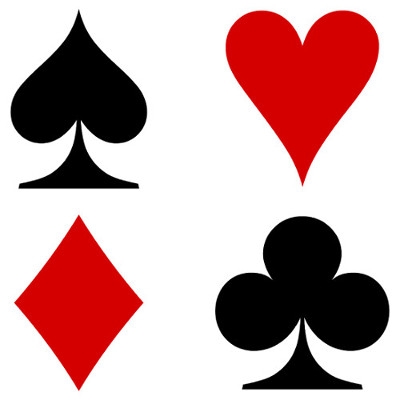Minor Matters - Bridge 215
All modern bidding systems are geared towards reaching games in Major suits or No Trumps where the requirement to make 10 or 9 tricks, respectively, is less onerous than the 11 tricks needed for Minor suit games. Moreover, trick for trick, Major suit and No Trump contracts score better than Minor ones. For example, a non-vulnerable game made in Diamonds would score 400 points, whereas the same 11 tricks made in a 3NT contract would yield 460.
In general, bids made in the Majors show length in the suit bid whereas bids in the Minors are very often conventional and are simply a prelude to finding fits in a Major suit. The Stayman response of 2♣ to opener's 1NT is a prime example of this but even Minor suit bids at the one level are subservient to an opening bid of one in a Major, that is 1♥ or 1♠, which requires 5 or more cards in the suit bid.
Opening bids of 1♣ or 1♦ can be made with as little as 3 cards in the suit (Better Minor - recommended) or even 2 cards in clubs (Short Club where partners have agreed to play that 1♦ shows a minimum of 4 Diamonds), in the case of balanced hands not having 5-card Majors. Responders to such bids will generally bid their 5+ card Majors or 4-card Majors up the line. In the absence of Majors, responder can bid NT or the other Minor.
The subject of opening bids in the Minors and responses thereto is rather more complex than I have outlined here and I recommend the reader access Larry Cohen's tutorial series https://www.larryco.com/bridge-learning-center/detail/18 for a comprehensive treatment of the subject. There is, however, one case on which I would like to elaborate – the case where responder has no 4-card Major but 5 or more cards in the opener's Minor and is thus obliged to raise partner's bid to the 2 or 3 level. Nowadays, more and more partnerships play "Inverted Minors", where the 2-level raise is stronger and shows at least 10 points while the 3-level bid is pre-emptive, showing 7 or less points. Hands with 8 or 9 points can be bid either way depending on the quality of the cards held.
The inversion of the Minor responses is primarily designed to give the partnership the extra bidding space to explore the possibility of a 3NT contract in the case where the responder has raised the Minor suit to the 2-level. A bid now of 2♥ or 2♠ by the opener would show one or more stoppers, but not necessarily 4 cards, in the bid Major and deny stoppers in the other Major. Opener's bid of 2NT would show stoppers in both Majors and less than 15 points and may be passed by responder. Opener would bid 3NT with a flat hand and 15+ points
Here is a hand from a recent club tournament:
North | |||
♠ K 10 3 | |||
♥ 3 | |||
♦ J 10 9 8 7 | |||
♣ K Q 5 4 | |||
South | |||
♠ A J 9 2 | |||
♥ K 5 9 | |||
♦ A Q 5 4 ♣ A J | |||
Sitting South, I opened 1♦ with 19 points and a flat hand. Despite having only 9 points, my partner's response of 2♦ was more than justified. I now bid 3NT to which partner responded 5♦, showing a distribution unsuited to No Trumps and a minimum for her original 2♦ bid - 4♦ would have been stronger, showing interest in a possible slam.
I now faced the typical quandary when the partnership reaches game in a minor suit after eschewing 3NT – was I to pass my partner's game bid or bid the Diamond slam. From my perspective, 3NT would have been made with at least one overtrick, possibly two, for a score of 630+, so making 5♦ for a score of 600 or even 620 with an overtrick, would give us a relatively poor score. I thus bid 6♦ even though we were probably an Ace short of a solid slam contract. As it transpired, the ♦K was with East and a winning finesse in the trump suit ensured the success of the slam.
Here's hoping that all your Minor suit versus NT decisions are as successful as mine was.








Comments